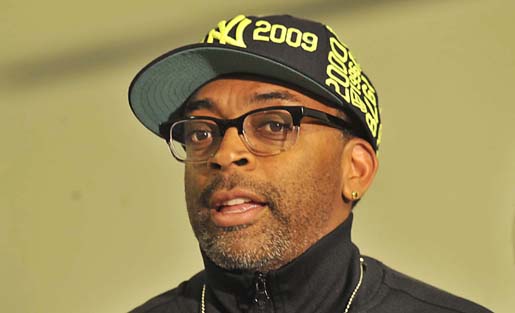Spike Lee joins Zach Braff and Rob Ford’s Veronica Mars on the list of celebrities to turn to Kickstarter to fund a project. It now seems that no star is too big — or too cool — to crowdfund. But what does the arrival of big names mean for the future of crowdfunding?
With big names, come big backers: Lee raised $1.4 million, a fifth of which came from 29 backers who each pledged $10,000. One of them was director Steven Soderbergh. Lee’s success at the top end of the funding spectrum is relatively unusual, too: the Braff and Ford campaigns each managed only one backer at that level.
For celebrities to be participants in the crowdfunding market as both funders and fundraisers demonstrates its maturity as a funding model. But the entrance of bigger names hasn’t gone without criticism. James Franco said the purpose of crowdfunding should be to “give a chance to talented people that deserve it but maybe wouldn’t have the opportunity to otherwise.” Franco himself raised $500,000 on Indiegogo to fund film adaptations of his book “Palo Alto” by up-and-coming directors, a campaign he said was developing new talent in the industry rather than supporting his own career. Braff defended his decision to crowdfund in a lengthy video. So is the entrance of bigger names into the market a betrayal of crowdfunding’s roots?
For some, crowdfunding was a way to fund the unfundable: To open up access to finance to things that conventional investment sources wouldn’t touch, or weren’t managing well. Crowdfunding sites attained much of their early popularity by channeling the struggling artist paradigm — and for some including Franco, that’s now in question. In the early days of crowdfunding, the model supported a clear and compelling message from musicians like Marillion: Help us fund our activities and liberate us from the failing A&R model of most record labels.
This “funder of last resort” condition clearly doesn’t apply to celebrated actors and directors. Many funders don’t seem to mind. While some crowdfunders see themselves as patrons or donors, for others, backing a campaign is a pretty conventional consumer transaction: The majority of pledges in campaigns tend to cluster around the purchase price of the item, and the reward for pledging at that level is usually the item itself. Operating this way, a campaign is merely a large-scale pre-sale. So if millions of people want to see a new Spike Lee film, what’s wrong with those people pre-paying for tickets? Despite Lee’s high-level backers, $50 was by far the most popular pledge level for the campaign, close to the typical cost of a movie night with a friend.
buying into the unknown
If crowdfunding is becoming largely a pre-sale exercise in some cases, is a norm of pre-paying in this way a bad precedent? Possibly. An audience member at Digital Preservation 2013 last month remarked to me that crowdfunders are being asked to take a greater leap of faith than ordinary consumers because they are buying into the unknown.
True, the ordinary consumer takes a risk in buying a cinema ticket — a bet on the quality of the product based on a trailer (probably not much slicker than the best crowdfunding videos) and the opinions of reviewers who are subject to very little public accountability.
But the crowdfunder consents to a much bigger transfer of risk in two ways: Firstly, there can be a time lag of several months before funders get to see the outcome of their donation. Secondly, the consumer agrees to assume, in the aggregate, the up-front financial risk of the project. This risk transfer is intrinsically beneficial to the project (crowdfunding has lower borrowing costs than conventional financing) but it’s also a powerful expression of trust and care. How an individual audience member will feel about being asked to allow a famous artist to deleverage at his expense is difficult to anticipate. In some cases, it’s a welcome arrangement; in other cases, it’s brash at best. Either way, the bigger ongoing question is whether audiences will become fatigued by being asked to make that level of commitment to successive projects.
the impact on the attention economy
As well as consuming audiences’ desire to give and commit, the entrance of larger players also has an impact on the attention economy. The entrance of campaigns with bigger resources inevitably makes it harder to get your crowdfunding campaign noticed. Projects with smaller campaign goals are inevitably less eye-catching than those with $1 million-plus price tags, making it harder for local projects to gain national attention. The halcyon days of crowdfunding — when small campaigns could attract attention because the method itself was novel, and skepticism around fulfillment was much lower — are over. And that’s not necessarily a bad thing, if it focuses attention on the highest-quality ideas and projects. However, if running a crowdfunding campaign requires an escalating investment of time (and therefore money), the claim that it democratizes access to capital deteriorates.
Braff, Lee, Ford and Franco are demonstrating the potential of crowdfunding to build big ambitions on many small pieces. Let’s hope their campaigns are an inspiration to the thousands of smaller, underserved ambitions we haven’t yet heard of.
This post originally appeared on the MIT Center for Civic Media blog.
Rodrigo Davies is a Research Assistant at MIT’s Center for Civic Media and an MS student in the Comparative Media Studies program. His research interests include the impact of social media on political discourse, crowdsourcing and political participation, ICT4D and user-led service design. Rodrigo works with the crisis mapping initiative Standby Task Force and is a policy advisor to the UK-based civic crowdfunding platform Spacehive. Before joining the Center Rodrigo was based Mumbai where he was a co-founding editor of Conde Nast India’s digital editorial business. Previously he was a journalist at the BBC and Bloomberg News. He holds a B.A. in History and Politics from Oxford University.

